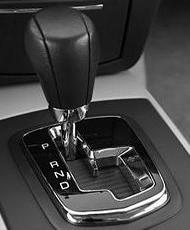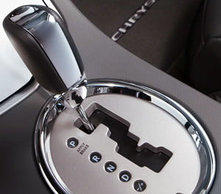Manual Shift Automatic Transmissions

Manual shifting automatic transmissions are becoming a popular option on many different kinds of automobiles. The main reason that the popularity of this option is growing is because it helps sell cars.
Having the option to shift manually for one thing is cool. But for me what I like most about it is if I’m stuck in traffic I can just put it in standard drive. So you might say that the manual shift option combines the best of both worlds.
With a flick of the wrist he can downshift and perform some highway passing. Then when the traffic backs up you will not have to worry about operating the clutch and getting a cramped left leg when you are in one of those three-mile traffic backups.
On this page I’m going to discuss the ins and outs of this popular option. But keep in mind that not all electronically controlled transmissions even if they have the numbers below the drive letter are equipped to perform manual shifting.
Another thing I would like to mention is that after talking with drivers that have this option it is very seldom used during regular driving. And therefore even though a manual shifting automatic transmission is cool it probably should not determine whether you will purchase that model vehicle or not.
How Manual Shifting Works
Basically these systems allow the driver to up shift or downshift manually. Although this gives the driver some control over what gear they are in most of these systems have an override function that stops the driver from doing something crazy. For example, if you’re cruising at 50 miles an hour an attempt to select first gear the transmission won’t let you.
I should mention that not all manual shift automatics behave in the same way nor do they control the same things. Some of the more pure performance vehicles such as your porches with paddle shifters will let the driver make more decisions than let’s say your Chrysler auto stick installed in your Chrysler 300 that I will discuss a little further below.
Although these are marketed as the sports option and a hybrid combination of a manual and automatic transmission, keep in mind that besides the shifter it really is a standard automatic unit with a torque converter. Therefore the performance numbers are not really as good as the same automobile equipped with a straight up manual transmission.
Another interesting fact is that some car magazines in testing the performance of these manual shifting automatics actually turned in better performance times when the standard drive range was selected. It would seem that the transmission control module is more capable of performing the best possible shift at wide open throttle than a human being.

This was one of the first manual shifting automatic transmissions installed in a domestic vehicle. They created it to give Chrysler an advantage in selling cars. Originally the system worked a little different than the General Motors one that’s still available today.
On GM vehicles the shifter is moved to the right into a manual gate and then manipulated up and back to down shift and up shift. On the Chrysler auto stick the shifter can be moved left and right when in the standard drive mode. If you leave it alone it will shift automatically.
If you flick it to the right it will downshift one gear and if you flick it to the left it will up shift one gear. For 2015 the Chrysler auto stick also has a separate manual gate, but still moves left and right. This gives the driver more control of the shifting then the full auto mode. It makes drivers feel like part of the process, providing a stronger connection between man and car.
However, the transmission control module can override this during some conditions. If you select first gear and smash the pedal to the floor, when the vehicle reaches the red line it will not wait for you to select the next gear.
It will shift into second automatically to prevent engine and transmission damage. Another thing I learned about the Chrysler auto stick is that the feature will be automatically disabled when the transmission control module senses a problem or sets a diagnostic trouble code. It will also disable the manual shift function if some check engine light codes are set. For example if an engine high temperature code is set and also transmission temperature high, will also disable the manual shift feature.
Since you stopped by to read about transmissions you might be interested in this next page. It is the start page for this section of the you fix cars website and it discusses theory of operation and common problems with certain models. Here is a link to the automatic transmissions section.
The homepage is a good place to stop if you’re interested in what else is covered on this do-it-yourself auto repair website. This next link takes you there from this page about manual shifting automatic transmissions.

